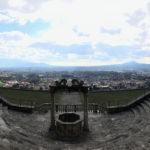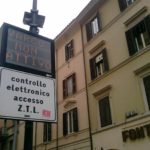Rome is a beautiful city with a guarded secret: the lack of an efficient public transport system. Those who come from outside Italy have the greatest difficulty figuring out its messy system because they are often used to 10 lines of metro, high speed rails with punctual timetables, and regularly maintained buses equipped with air conditioning.
Unfortunately in Rome that isn’t the case. We purposely don’t over-publicize apartments that are near metro stations because you won’t need it. Rome has just 2 metro lines and the only way to move within the historic center, where the most important things to see and do are located, is to travel on foot.
But if you grow weary from several days of walking on the unforgiving basalt-stone streets, here are a few pointers to master Rome’s daunting public transportation system.
There are lots of bus stops, indicated by a yellow sign on the sidewalk, scattered all over the historic center so you can easily find the most useful line for you. On the yellow sign you’ll find the name of the current stop (fermata) above the sign, and then a row of bus lines that service this stop. Below each bus line is a list of its stops. Within these lists your current stop is distinguished by a red outline. Stops that come before the current stop are written above; those that follow are written below. Count the number of stops between the current one and your destination. Once you are on the bus you can keep count of the number of stops or simply tell the bus driver to let you know when you’ve arrived. Here you can download the map with all of the bus lines in the historic center: http://www.atac.roma.it/files/doc.asp?r=3
As I said, there are only 2 metro lines: “A” (red) and “B” (blue). The only station where they cross and where you can change lines is Termini. The stops that are useful for most tourists in Rome are Colosseo and Circo Massimo on Metro “B” and Vaticano and Piazza di Spagna on metro “A”. Here is a map showing all of the stations: http://www.atac.roma.it/files/doc.asp?r=4.
There’s a myth that buses don’t require tickets in Rome, but nothing could be further from the truth! It’s true that the buses follow an honor system and there may not be someone to check your ticket, but to ride without a ticket could cost you a €50 fine when tickets only cost €1.50. Tickets are valid for a total of 100 minutes and include a single metro ride and unlimited bus transfers. An all-day ticket is available for 6€ or 3 days for 16.50€. Tickets must be purchased before getting on a bus or metro at either a ticket machine, ticket window (biglietteria) or a newspaper stand ortabacchi. Once you have boarded the bus your ticket must be stamped at one of the small yellow machines you’ll find on board. You can board the bus through any door, not only the door nearest the driver as is the case in many countries.
A very helpful tool to calculate your travel time, look up stops, or check current waiting times is one of Rome’s public transportation App for smartphones. I use “Probus Roma AutoBus” or you can download “Muoversi a Roma”.
You won’t find any schedules at the bus stops – another reason to download an app – but it just goes to reinforce our relaxed, care-free culture in Italy. When in Rome, right?
If you would like tickets (the same ticket is valid for metro, bus, and tram) upon arrival at your apartment, let us know! We’re here to make your traveling experience in Rome as easy and stress-free as possible.


















